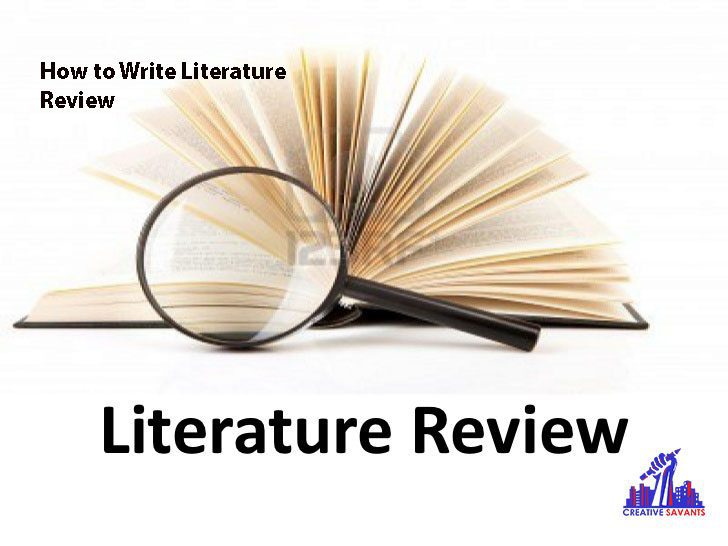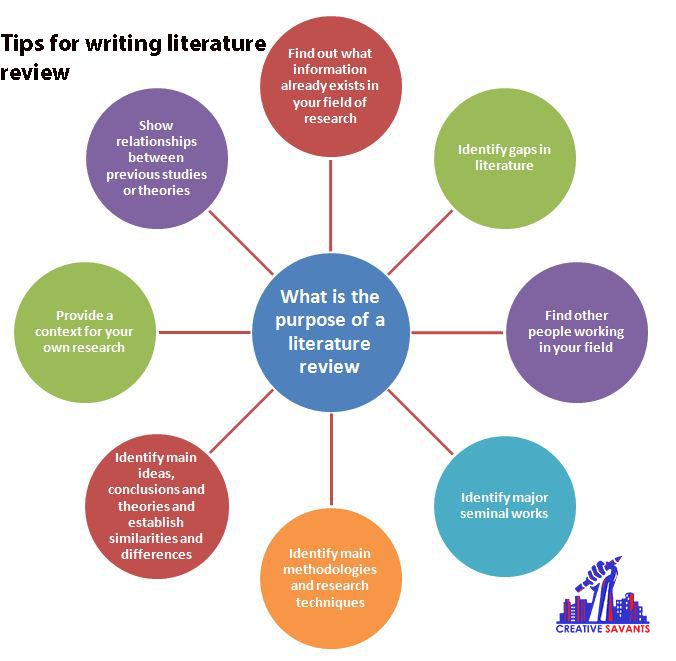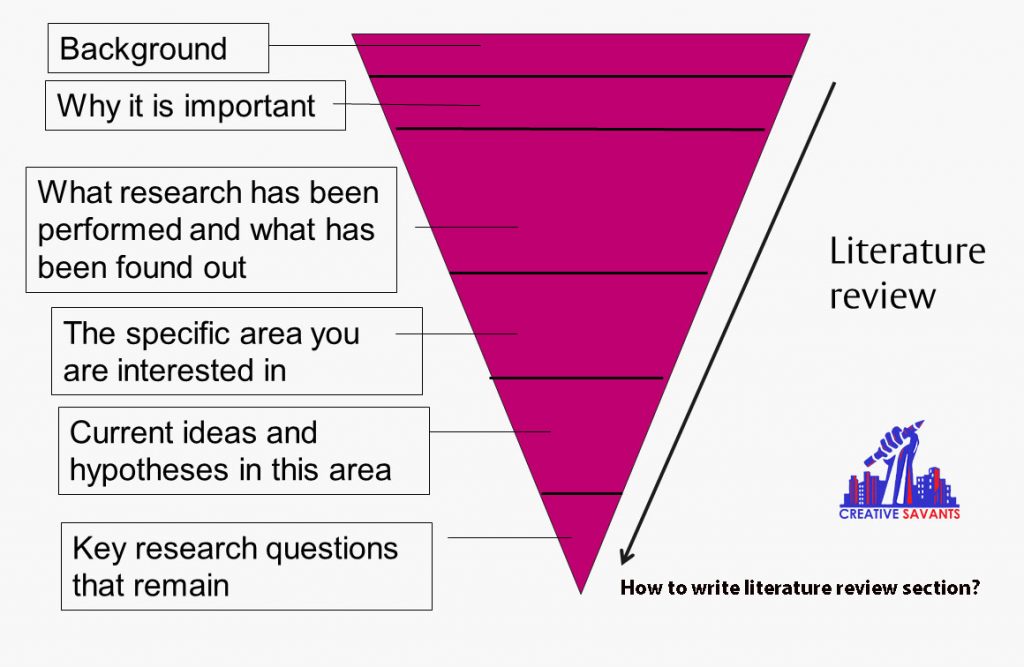You might have to start with a literature review when you are preparing an undergraduate dissertation. It establishes the current state of knowledge in the field of the issue or topic you’re writing about. A literature review is an evaluation and search of the existing literature in your selected topic area or subject.
What is a literature review?
The survey of already published material in a certain topic area, as well as information published within a specific time period, is defined as literature review. A literature review generally follows a structure and includes both summary and synthesis, but it can also be as basic as a list of sources.
A synthesis is a re-organization or reshuffling of the source’s key information. A summary is merely a short recap of that material. It may also document the field’s intellectual progress, including major disagreements. It might offer a new perspective on current information or combine new and old viewpoints.
Following are some major goals of a literature review:
- It examines the literature in your field of study.
- It arranges the literature in a logical manner.
- The information found in the literature is compiled in a summary.
- It critically evaluates the data obtained by demonstrating the limitations of ideas and points of view, pinpointing knowledge gaps, examining areas of argument and recommending opportunities for additional research.
Significance of writing a fair literature review
There are certain cases in which an overview of significant sources will suffice, but a literature review in the social sciences is more likely to have an organizational pattern and include summary and analysis within particular conceptual categories.
While a summary summarizes the main points of the source, synthesis is the structuring of that material such that it influences the way you plan to study a research issue in the future. A literature review’s analytical aspects may include:
- Reinterpret old content in a fresh way or mix new and old views.
- At the completion of a literature review, identify any gaps in how a topic has been researched to date.
- Based on the circumstances, Assess the sources and recommend the most relevant or timely research,
- Follow the field’s intellectual development, including important disputes.
A literature review’s goal is to:
- Explain how each piece links to the others.
- Evaluate in a way that will help you to see how each contribution will help you gain more insight into the study topic.
- It’s important to place your own research in the context of prior work.
- There should be a full disclosure of any gaps in the literature.
- Discover fresh ways to understand existing research.
- Provide a plan of action for resolving a need for more research.
- Assist in the resolution of inconsistencies between previously published research that appear to be contradicting.
- Avoid unnecessary duplication by identifying areas of previous research.
Types of literature reviews
It is important to think of knowledge as having three layers in any particular subject. The first is the studies that researchers publish after performing the experiments firsthand. The study reviews where fresh interpretations based on and frequently going beyond the initial research are given and summarized, constitute the second layer. The conclusions, informal views, interpretations, and opinions that become part of the field lore are the third.
The third layer of information is often referred to as “true” in literature reviews, despite the fact that it is rarely directly connected to primary research and secondary literature studies.
This means, although though a literature review is meant to give an overview and synthesis of relevant sources you have studied, there are a variety of techniques you may take based on the sort of analysis that underpins your study.
- Systematic review
- Argumentative review
- Integrative review
- Theoretical review
- Methodological review
- Historical review
Systematic review
Systematic reviews include a relevant overview of existing evidence to the study subject. It also discusses strategies for selecting and critically assessing relevant research. These strategies could also help in collection and reporting data from the studies that are included in the review.
One of the main goals is to critically examine, painstakingly document, and scientifically synthesize all of the research that has been conducted on the topic. This type of literature review is becoming increasingly prominent in the social sciences these days. Most often, this type of literature review was used in allied health professions and clinical medicine to analyze previous findings of the studies.
Argumentative review
This method studies literature selectively in order to support or disprove a previously existing argument, a philosophical issue, or deeply ingrained belief. The goal of this review is to create a corpus of work that develops a counter-intuitive perspective. Argumentative ways to interpreting the literature may be an acceptable and important type of discourse, given the value-laden nature of some social scientific studies. However, when they are used to make summary statements like those found in systematic reviews, they might present bias issues.
Integrative review
This is the most common form of review in the social sciences. To generate new frameworks and perspectives on a subject, integrative reviews investigate, analyze and synthesize representative literature on a topic in an integrated manner.
Well-done integrative reviews meet the same standards for completeness, repeatability, and clarity as primary research. The body of literature includes all studies that address similar or identical hypotheses or research questions.
Theoretical review
If you’re interested in a specific notion, issue, phenomena, or theory, this is the method for you. While writing this type of literature review, current theories may be identified and investigated through literature reviews. They can also be linked to each other, and new hypotheses can be created and tested. The analytical unit might be an entire theory or framework or a single theoretical notion. To illustrate the lack of appropriate ideas or the inadequacy of current theories for comprehending new or emerging research issues, this technique is widely utilized.
Methodological review
What someone says isn’t necessarily the subject of a review, but how they got to say it is. Research methods give a framework for understanding at many levels, such as theory, substantive domains, research methodologies or data collecting and analysis techniques. Also, it tells how researchers draw on a broad range of information, such as practical documents for use in fieldwork, conceptual knowledge, as well as epistemological and ontological considerations.
Historical review
An historical perspective is used in this sort of review in order to illustrate current understanding and forecast future study topics.
Historiographical literature evaluations analyze the development of a subject over time by starting with its first appearance in the literature and tracing its development within a discipline’s research.
The structure of a literature review
Literature review for a dissertation is structured typically like any other essay with the following main parts:
- Introduction
- Main body
- Conclusion
Introduction
The introduction should include the following:
- Offer an acceptable framework for evaluating the literature by defining your topic and providing an appropriate context for studying the material.
- Describe the organization i.e. sequence of the review;
- Declare the review’s scope – that is, what is included and what isn’t.
For example, if you were examining the literature on childhood obesity, you would remark, “There are several studies on obesity trends in the general population.” However, these trends will not be discussed in depth and will only be mentioned, when necessary, as the focus of this study is on childhood obesity.
Main body
While writing the main body or midsection of a literature review, you should:
- Provide insight into the relationship between your selected issue and the larger subject area, such as the relationship between childhood obesity and obesity in general.
- Use the common themes to organize the literature accordingly.
- From a broad, overarching view of the material being evaluated, narrow your attention to the precise subject of your research.
Conclusion
To write conclusion:
- Assess the current condition of the examined literature.
- Summarize the key elements of the present corpus of knowledge.
- Make a connection between your study and current knowledge.
- Look for or holes in current knowledge that are substantial.
- A list of areas that should be researched in the future.
The thought processes
Now let’s discuss how to write a literature review. The first step to write is to start the thought process by critically evaluating the topic you have decided to work on.
Each work’s critical appraisal should take into account the following factors:
Methodology
Was the sample size sufficient? Were the findings properly evaluated and communicated? Were the procedures employed to find, collect, and evaluate data acceptable for the study problem?
Persuasiveness
Which of the author’s theses is the most persuasive, and which is the least persuasive?
Provenance
Is there proof to back up the author’s claims? for example, case studies, original historical documents, statistics, current scientific findings, and narratives.
Value
Is the study eventually helpful in gaining a better knowledge of the subject? Are the author’s arguments and conclusions believable?
Objectivity
Is the author’s point of view balanced or biased? Is opposing evidence evaluated, or is certain relevant material overlooked in order to establish the author’s point?
Developing the ideas into a scheme
The development of a literature review can be carried out in four basic steps:
- Problem formulation – What topic or field is being investigated, and what are the issues that make up that topic or field?
- Finding information related to the topic being researched through a literature search.
- Data evaluation identifies which literature contributes significantly to the topic’s understanding.
- The findings and conclusions of relevant literature are discussed in the analysis and interpretation.
While writing a literature review, following issues should be kept in mind.
Look for models
Study how writers in your subject or area of interest have written their literature review sections by reviewing the literature. It’s a good approach to get a feel of the sorts of topics you might want to look for in your own study or for ideas on how to organize. You can also start your own research with the bibliography or reference section of materials you’ve previously read.
Clarify
If your professor’s instructions are vague concerning the format of your literature review, ask him or her the following questions:
- Is there a difference between scholarly and popular sources?
- When it comes to sources, how many should I include?
- Would it be better if I summarized, synthesized, or critiqued sources by focusing on a common issue or theme?
Specify the Subject
Your professor is unlikely to expect you to study all there is to read on the subject, but you may make your task simpler by first narrowing the scope of the research problem. The smaller your topic, the fewer sources you’ll need to study to get a comprehensive overview of relevant information.
Check to see if your sources are up to date.
Some fields demand that you utilize the most up-to-date information feasible. This is especially true in fields like health and science, where knowledge is swiftly rendered outdated as new discoveries are discovered. In the social sciences, however, an examination of the literature’s history may be necessary while producing a review.
Organization of literature review
Once you have your material, you need an organizational framework to present your sources in a proper way. Following are some ways to organize a literature review.
Chronological order
You might write about the items according to when they were published if your review follows the chronological technique. If a clear research route can be established that is, one that builds on prior research and that the patterns follow a clear chronological order of development, only then, this technique should be used.
For example, a literature study that focuses on ongoing research into the rise of German economic strength following the Soviet Union’s demise.
Publication
Then, only if the order reveals a more relevant pattern, organize your sources by publication chronology. For example, if the history indicated, for example, a change in the soil collecting techniques of the researchers who published and/or performed the studies, you might commission a review of literature on environmental studies of brown fields.
Thematic or conceptual
Rather than chronological order, thematic reviews of literature are based on a single theme or concern. In a thematic review, however, the passage of time may still be a significant impact. It’s worth noting, though, that more realistic theme evaluations stray from chronological sequence. According to the argument presented, a review arranged in this manner would change across time periods within each part.
Methodological approach
The researcher’s techniques are the emphasis of a methodological approach. It does not have to do anything with the contents of the material instead, it involves the methods used by the writer or researcher. The sorts of documents included in the review, as well as how they are addressed, will be influenced by the methodological scope.
How to structure literature review:
Now that you have organized your literature review, you can start writing but you should be considerate about following:
Synthesize and summarize
Within each theme paragraph, as well as throughout the evaluation, remember to summarize and synthesize your sources. Synthesize it by rephrasing the importance of the study and connecting it to your own work.
Make use of evidence
In order to prove that your interpretation of the available sources is legitimate, you must provide proof to back them up i.e., citations. In this way, a literature review part is similar to any other portion of an academic research report.
Maintain your individuality
Literature reviews convey other people’s opinions, but you need to remain in the spotlight. Incorporate citations from other sources into your work but keep a personal voice by beginning and finishing each paragraph with your own thoughts and language.
Sparingly use the quotes
Some brief quotations are permitted if you want to draw attention to a particular issue or if what an author stated cannot be easily duplicated. The terminology you employ may have been created by the author, drawn from the study, or is obscure. You should not rely on extensive quotes to substitute your own judgement and understanding of the content.
Pick and choose carefully
If you’d want to emphasize the most important information from each source, pick only the content you see appropriate to write, whether it’s thematic, methodological, or chronological, it should be closely connected to the study subject. A list of extra readings might contain related things that give more knowledge but are not essential to comprehending the research problem.
When paraphrasing, be cautious
When paraphrasing a source that isn’t your own, be careful to correctly and in your own words reflect the author’s facts or ideas. Even if you are paraphrasing an author’s work, you must include a citation.
Revise your work
It’s a good idea to spend a lot of time editing as the primary goal is to convey the content and not the argument.
- Double-check your evaluation to ensure it adheres to the assignment and/or your outline.
- Remove any needless jargon or slang and utilize terms that your audience is acquainted with.
- Rewrite or modify the wording of your review, just like you would for most other academic kinds of writing, so that you’ve presented your facts in the most succinct manner feasible.
- Finally, double-check that you’ve properly documented your sources and structured your review for your field.
Some tips – the dos and don’ts
Break Free from Your Disciplinary Boundaries!
Applying new ideas, theories, or concepts to an old problem by thinking interdisciplinarity about a research subject may be a worthwhile activity. How, for example, may geographers perceive the need for improved distribution of social care organizations in major cities differently from social workers? What could cultural anthropologists have to say about the Middle East’s ongoing conflict?
Literature Review Examples
You don’t want to replace studies done in other fields of study for a comprehensive assessment of key research literature in your discipline. Thinking at research challenges from different vectors is a significant technique for finding new answers to problems or getting a fresh viewpoint, especially in the social sciences.
Some things to remember!
When conducting research and drafting your literature review, keep the following points in mind.
- It is not a chapter-by-chapter or article-by-article synopsis.
- It’s not a list of things to do.
- It isn’t a comprehensive review of everything that has ever been written on your subject.
- It must inform the reader about the established and agreed-upon information and concepts in your field, as well as their strengths and limitations.
Typical mistakes
When reviewing social science research literature, these are the most typical blunders:
- When writing the literature review, you do not spend enough effort defining and identifying the most relevant sources to employ in relation to the study topic.
- Your literature review’s sources don’t seem to be related to the research problem.
- Doesn’t examine all research design and analytic components critically before accepting another researcher’s findings and interpretations as valid.
- Rather than providing pertinent original research papers or data, relies solely on secondary analytical sources.
- It must be characterized by a central idea, such as an essay topic, an objective, or a research project.
Frequently asked questions (FAQs)
What exactly is a literature review?
A literature review is a thorough summary of past research on a particular subject. The literature review examines academic papers, books, and other materials that are pertinent to a certain study topic. This past study should be described, enumerated, summarized, clarified and objectively evaluated in the review. We also added literature review examples for your reference.
In a literature review, how many sources are required?
For instance, a paper with ten pages of material (the body of the study) requires at least ten citations for its literature review. There are at least 100 sources in a 100-page thesis (in the body).
Is a title required for a literature review?
A literature review is a summary of all available research on a certain subject. Select the most significant articles because your project will be a brief review and you won’t be able to incorporate all of the relevant material. The review should be about ten double-spaced typed pages in length excluding title or reference pages.
What makes a decent title for a literature review?
A good title should include information about the research study’s topic and/or scope. Catchy phrases or non-specific words may be used in academic writing, but only if they are relevant to the topic.




